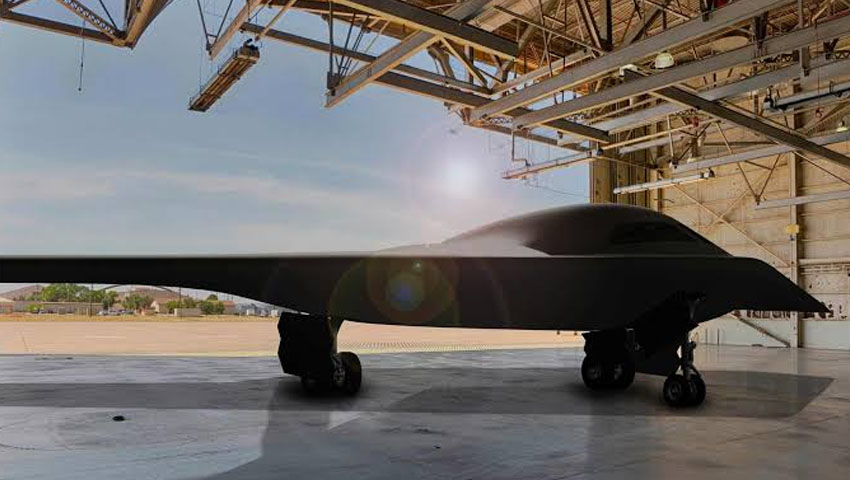The B21 is expected to be the world’s most advanced, cost-effective long-range strike capability. Australia must make the case to our US allies to procure B21s and to house one of the world’s most fearsome deterrents right in our airbases.
To continue reading the rest of this article, please log in.
Create free account to get unlimited news articles and more!
On the character of modern conflict, ADFA’s Professor David Kilcullen often cites former CIA director James Woolsey’s description of the post-Soviet era’s geopolitical arena. “We have slain a large dragon, but we live now in a jungle filled with a bewildering variety of poisonous snakes. And in many ways, the dragon was easier to keep track of,” Woolsey said at his confirmation hearing. Indeed, Professor Kilcullen resonated with the notion so much so that it formed the basis of his recent book, The Dragons and The Snakes.
The metaphor is easy enough to understand. In conflict, it is sometimes simpler to deal with the behemoth. You understand their motives, of which they may be centrally crafted and of one mind. Further, they may be confined to a geographical region or even perhaps bounded by ideological constraints.
On the other hand, the post-Soviet era (or as Professor Kilcullen describes, the post-Woolseyan era) describes the West as surrounded by poisonous snakes who can cause lethal damage but remain undetected. In recent years, these snakes have grown their warfighting capabilities and can even challenge the dragons. Look no further than state sanctioned hacking groups in North Korea and Russia that have been able to penetrate deep into some of the West’s most secure telecommunications networks.
Australia is by no means a snake. We are a liberal, democratic and rules-based nation. But the lesson from Woolsey’s metaphor is clear: small, independent and disparate groups have been able to onboard capabilities that counterbalance global superpowers and thus ensure their continued survival. Australia is no different, and must find the next great technological leap to ensure that Australia’s sovereignty is protected and to deter any malicious state or non-state actors from interfering in our day-to-day lives.
Australia needs the B21.
The B21 will be a strategic gamechanger for Australia. While some sources suggest that the B21 will be able to travel anywhere on the world, even the more measured analysts such as ASPI’s Marcus Hellyer suggest that the B21 would provide huge capability improvements on the West’s current fleet.
“It’s using two F-35 engines, for example, but it will have three or four times the range of the F-35. That will allow it to reach far out into the Indo-Pacific, greatly complicating the planning of any adversary operating against us or our friends. It also means it can be based deep inside Australia, far from threats, and still not need to rely on tanker support,” Hellyer wrote in ASPI’s The Strategist.
Hellyer raises an interesting point. The increased range of the B21 allows the RAAF to tuck the aircraft safely away in Australia’s interior, further from the strike capacity of any potential enemies.
Unfortunately for Australia, we need the US to approve the sale of the technology to the RAAF which is by no means guaranteed. This is why our key decision makers in Canberra as well as our advocates in Washington DC must continuously reiterate the maxim of burden sharing. Financial and military parameters don’t necessarily favour a US military that houses troops and hardware on every continent. It is beneficial, both to Australia and the US, for Australia to strengthen its military to take the burden off of the US.
The B21 will allow Australia to expand its umbrella of deterrence over the Indo-Pacific, safely encompassing many of Australia’s key regional allies under a Pax Australis and allowing the US to focus on more pertinent issues to its security. Amazingly for the US, it will not only allow more strategic allocation of troops – but hallelujah, Australia will also pick up the tab of our native B21 program. This will support Australia and America’s regional security.
It is expected that the first B21 will be completed in early 2022 and shortly after undertake its first test flight. If all is successful during this phase, the B21s will likely be rolled out to the US Air Force in the mid-to-late 2020s. As such, the B21’s long-range strike deterrent will provide an impactful and complementary long range strike capability until the rollout of the attack-class submarines. Just imagine the deterrent effect that both the B21 and the Attack Class submarines would have on a would-be conventional adversary.
Interestingly, the price of the B21s aren’t even particularly prohibitive. “A squadron of 12 aircraft will likely total around $20–25 billion once we add in bases, support systems such as simulators and maintenance facilities, and so on. That’s a lot, but compared to the $45 billion to be spent on future frigates, the $89 billion on submarines or indeed the $30 billion on armoured vehicles, it’s a price worth considering,” ASPI’s Marcus Hellyer wrote in The Strategist.
In Professor Kilcullen’s analysis of Woolsey’s dragons and snakes, he noted that many snakes are becoming threats to superpowers due to the ability to onboard critical technology. Indeed, Australia is not a snake – but what it can learn from the snakes is that size doesn’t matter, and that Australia could have a lethal venom that can keep enemies at bay.
Get involved with the discussion and let us know your thoughts on Australia's future role and position in the Indo-Pacific region and what you would like to see from Australia's political leaders in terms of partisan and bipartisan agenda setting in the comments section below, or get in touch with
Liam Garman
Editor – Defence and Security, Momentum Media

 Login
Login








